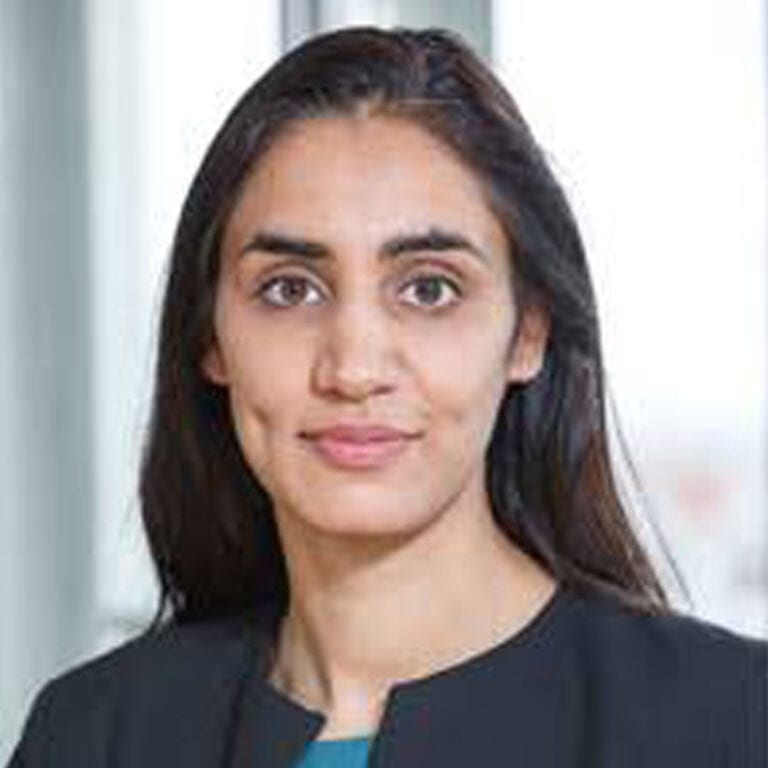by Danny Levine

Angeli Moeller, PhD
The use of artificial intelligence promises to accelerate the diagnosis of rare disease and speed the development of new therapies for these conditions because of its ability to analyze and learn from large sets of data.
The power of the technology has already been demonstrated in areas such as cardiovascular disease, where researchers have been able to apply machine learning approaches to predict when a stroke is going to occur, what the severity of that stroke might be, or to determine the course of adverse events occurring in a patient with heart failure. Now, the hope is to apply that technology to better understand rare diseases.
“We’re challenged by the fact that we don’t have data sets large enough for us to currently be able to run the type of analysis that can be powered by deep learning, which has been possible in other disease areas where larger data sets are available,” said Dr. Angeli Moeller, a member of the RARE-X board and a member of the executive committee of the Alliance for Artificial Intelligence in Healthcare.”
Moeller said that building the RARE-X platform around a federated database—a means of connecting disparate databases together while leaving the owners in control of their own data—is a means of doing for rare disease what has been shown possible in more common diseases where large data sets can be accessed more readily. That has the potential to change the rare disease landscape.
“We want to make that possible for the rare disease population—to give them the best chance possible,” said Moeller. “And we want to build up a network of data sets large enough to be usable for machine learning and artificial intelligence.”
Because of the desire to protect improper data access and hacking, the best way of doing that was by creating a system where the data remains in storage wherever it is, which is how a federated database works.
“It can stay at the hospital where it was initially collected. It can stay at the academic Institute. It can stay, if they have appropriate housing for it, with the patient advocacy group that originally collected that data,” she said. “What we can do with the platform that we’re setting up with RARE-X is then allow a federated approach to access that data, to have clean, curated, interconnected data. And then at that point, we’ll really be able to take what we’ve seen work so successfully in other disease areas with large numbers and bring that into the rare disease space.”
One of the challenges of diagnosing a rare disease is that its symptoms can be indicative of more common ailments. One area where artificial intelligence can provide rapid and cost-effective diagnosis is through the analysis of pathological and radiological images. This can be used to identify people suspected of having a rare condition and confirm it with additional testing. To do so accurately, though, requires large data sets to identify patterns indicative of a rare disease.
Because of the small patient populations in any individual rare disease, one of the benefits of federating large data sets will be that it will allow researchers to look at a patient’s phenotypes—the manifestations of a person’s condition—and find commonalities with other patients with different genotypes and the different genetic mutations that underlie their illness. This can help to improve diagnosis and identify therapies used to treat one condition that might benefit patients with another.
Moeller thinks emerging data science will not only allow clinicians and drug developers to perform their jobs better but also allow them to do what they do in new ways. As an analogy, she said a taxi company could use data science to predict weather, traffic, and other elements that affect it to become highly efficient. Alternatively, it could harness the technology to become Uber, an entirely new business model.
She believes the power of AI is often underestimated in healthcare. She sees that changing but thinks healthcare executives are slower to embrace the potential of the technology. The biggest obstacle to realizing the potential for the technology is not an unwillingness to adopt it, but a lack of available talent. Nevertheless, she said universities and governments are investing in building the talent pipeline and thinks that problem will be temporary.
No matter how powerful the technology is, though, it will be limited by the quality of the dataset it is employed to analyze—a problem that has long been characterized in computer science as “garbage in, garbage out.”
“There’s been work for decades on data standards, on data quality, and now on federating data more recently. But I think it is sometimes forgotten under the flashy title of artificial intelligence, ultimately it all starts off with, ‘What is your data veracity?’” she said. “’What is your data volume? Can you start to really build predictive models on that data? Do you have enough of it? Is it sufficiently well curated? Is it sufficiently well interconnected?’”
Moeller believes the technology will help to transform the rare disease space by lowering the cost of research into rare diseases to make it much more attractive to therapeutic developers and bring better treatments faster to the patients who really need them, which is ultimately the goal.
“It will take away a lot of the initial overhead costs that you need to move into this space. And I think that’s what the buildup of the RARE-X platform will be able to do,” she said, pointing to the potential for enabling smaller trials by eliminating the need for placebo arms with the use of synthetic data or real-world data to demonstrate a treatment can improve patients’ quality of life. “That’s going to be a large part of the cost reduction that the RARE-X platform’s going to be able to provide.”

Stay Connected
Sign up for updates straight to your inbox.
